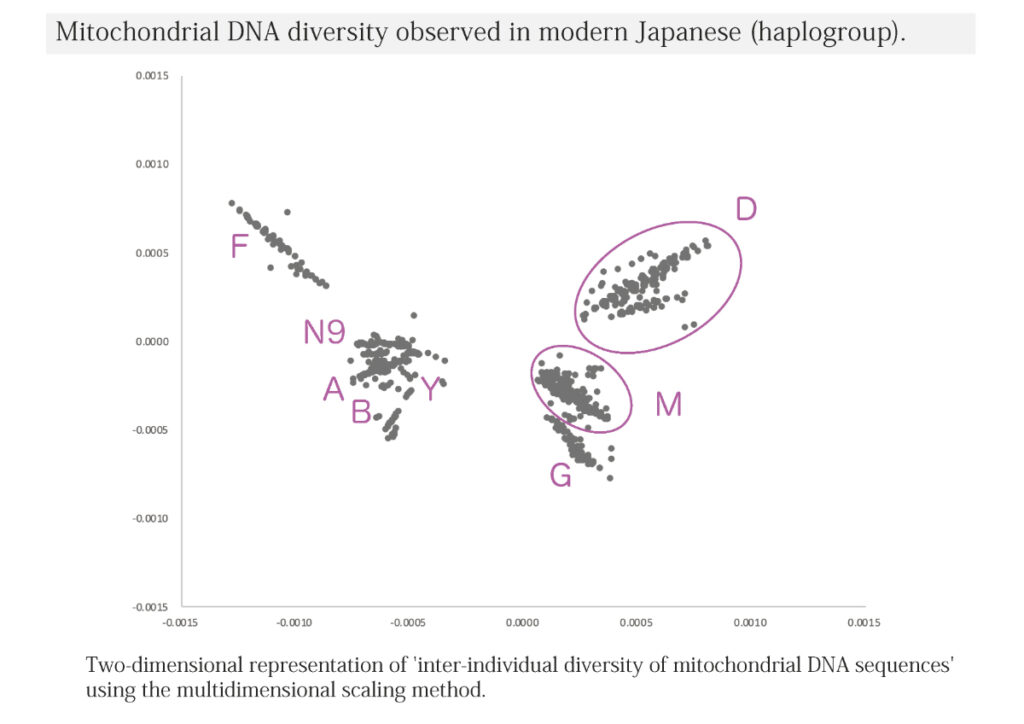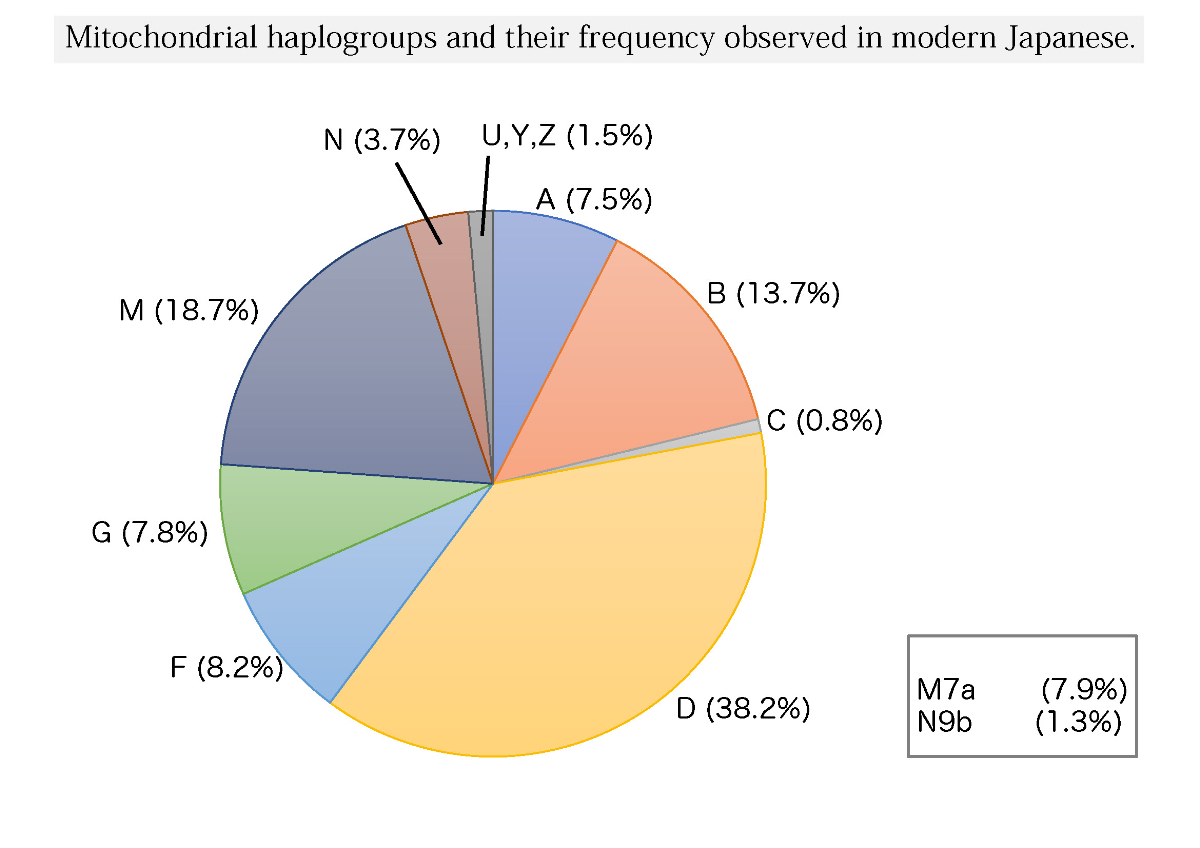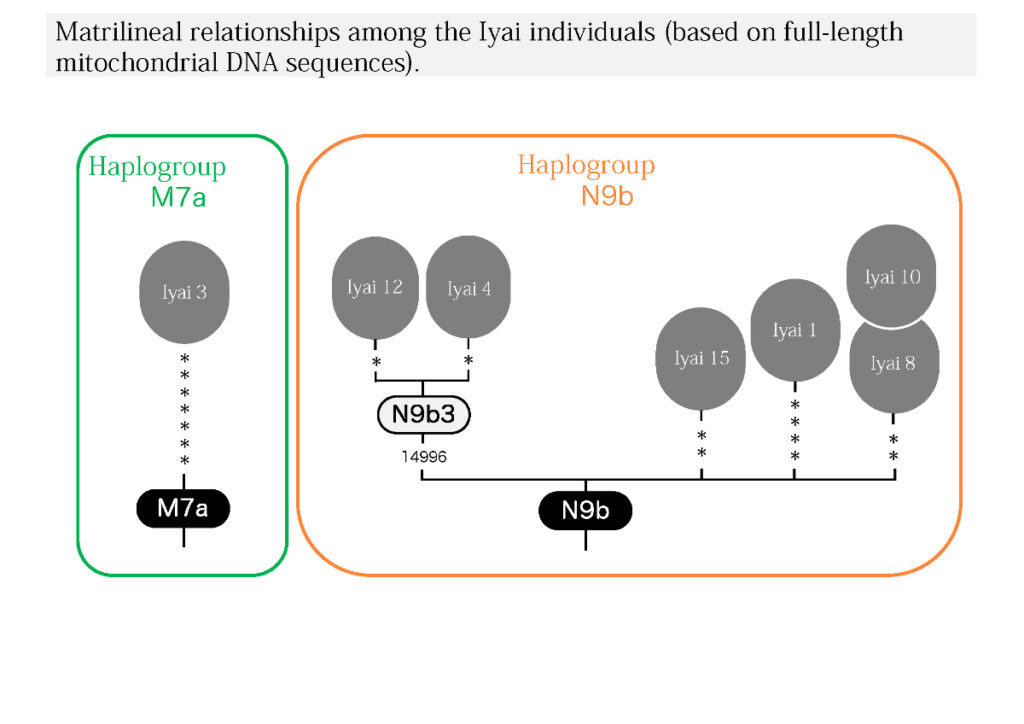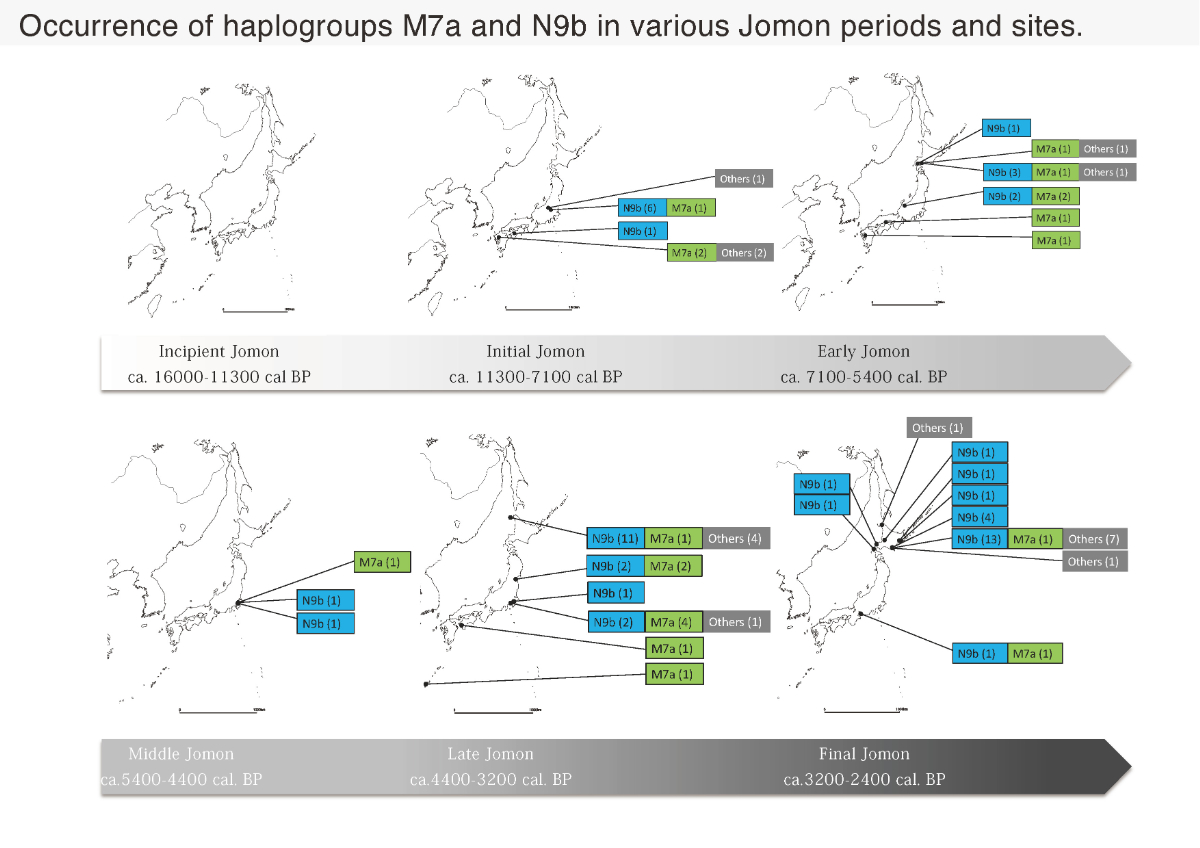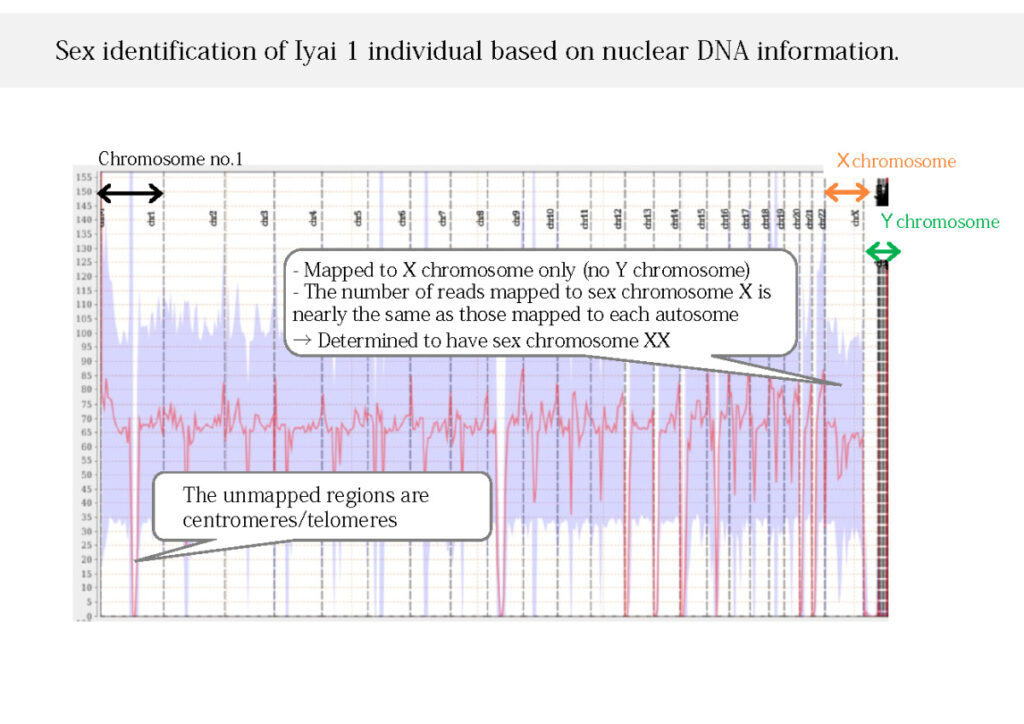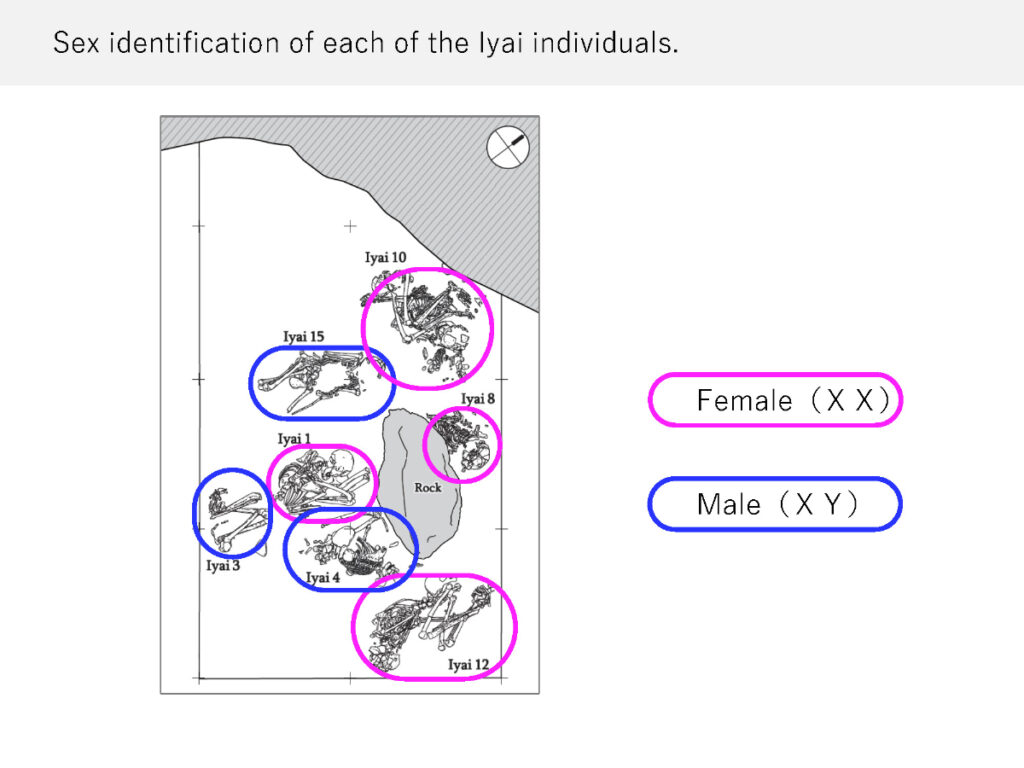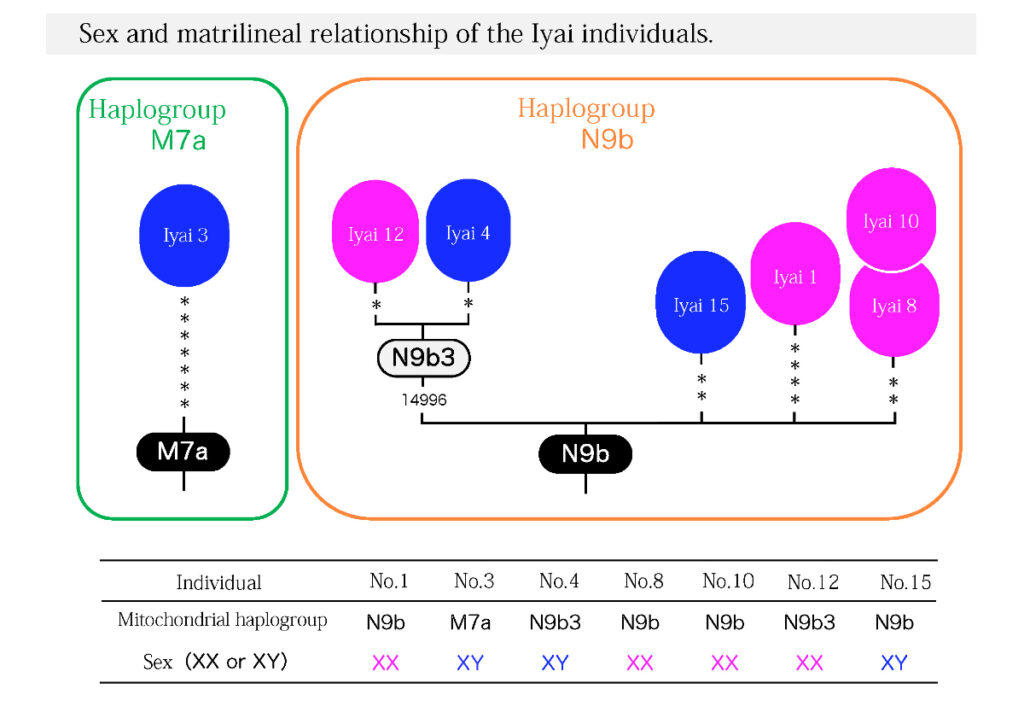DNA Analysis
The human genome, often referred to as the ‘blueprint of life,’ consists of DNA, a fundamental substance found in the nucleus and mitochondria of cells. Nuclear DNA is inherited from both parents, whereas mitochondrial DNA (mtDNA) is solely inherited from the mother (Figure 1). This section introduces key findings derived from DNA analysis conducted on human skeletal remains recovered from the Iyai rock shelter site.
Mitochondrial Genome Analysis of Human Skeletal Remains from the Iyai Rock Shelter Site
Unlike nuclear DNA, mtDNA does not undergo genetic recombination, meaning differences in sequences between individuals predominantly stem from base substitutions. These sequence differences in mtDNA are nearly ten times more diverse than those found in nuclear DNA. Researchers worldwide have extensively used these differences as indicators in the study of human evolution. We applied target enrichment-coupled next generation sequencing and successfully determined the complete mtDNA (Figure 2).
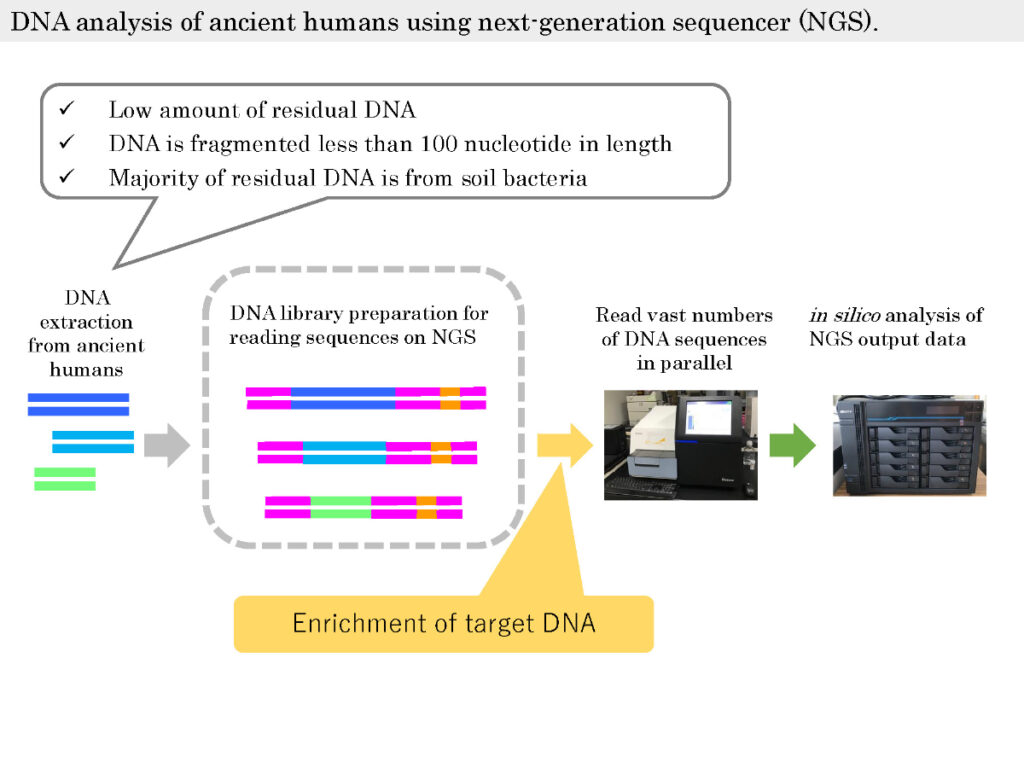
In modern Japanese populations, the most prevalent haplogroup is haplogroup D4, accounting for approximately 34% (refer to Figures 3 and 4). However, among the human skeletal remains unearthed at the Iyai rock shelter site (a total of seven individuals), six individuals (Nos. 1, 4, 8, 10, 12, and 15) are categorized under the N9b haplogroup, while one individual (No. 3) belongs to the M7a haplogroup. However, it is important to note that “the same haplogroup does not necessarily equate to an identical mtDNA sequence”, so we analysed all of approximately 16,600 bases comprising the mtDNA. Figures 5 and 6 display the maternal phylogenetic relationships among the seven individuals from the Iyai site, based on their complete mtDNA sequences.
The mtDNA of individuals Nos. 1, 4, 8, 10, 12 and 15 from the Iyai rock shelter site belong to the Haplogroup N9b lineage, but the complete base sequences are different from the previously reported mitochondrial sequences belonging to Haplogroup N9b. Interestingly, the mtDNA sequences of Individuals Nos. 8 and 10 from the Iyai rock shelter site were completely identical. In addition, the mtDNA of Individual No. 3 from the Iyai rock shelter site belongs to haplogroup M7a, but the complete base sequence differs from previously reported mitochondrial sequences belonging to haplogroup M7a.
The haplogroups and the number of individuals of each haplogroup obtained from human skeletal remains excavated throughout the Jomon period, which spans more than 10,000 years, are shown by site and period in Figure 7. Although there is little data from Western Japan, (1) haplogroup M7a is widely distributed across the Japanese archipelago, (2) haplogroup N9b is widely distributed in the Japanese archipelago except south of Kyushu, (3) regional differences are observed but not temporal differences, and (4) haplogroups M7a and N9b are observed together at many archaeological sites.
Nuclear Genome Analysis of Human Skeletal Remains from the Iyai Rock Shelter Site
Next, we carried out sex determination based on nuclear DNA. In addition to the 22 pairs of autosomes (44 total) common to both sexes, the human nucleus contains two sex chromosomes X in females and one each of sex chromosomes X and Y in males. Figure 8 shows the results of mapping (pasting) DNA sequences of Individual No.1 obtained by large-scale DNA analysis onto a reference sequence of the human genome. For sex chromosomes, DNA fragments are mapped to sex chromosome X in approximately the same numbers as for autosomes, but not to sex chromosome Y. Mapping on sex chromosome X to the same degree as autosomes means having two sex chromosome Xs, and not mapping on sex chromosome Y means having no sex chromosome Y. Figure 9 shows the results of sex obtained from the such DNA analysis. Combining these results with the matrilineal relationships identified from the complete mtDNA sequences, it is possible to conclude that the two individuals from the Iyai rock shelter site, Nos. 8 and 10, are likely to be ‘mother and daughter’/’sisters’ or possess very close matrilineal kinship (Figure 10).

